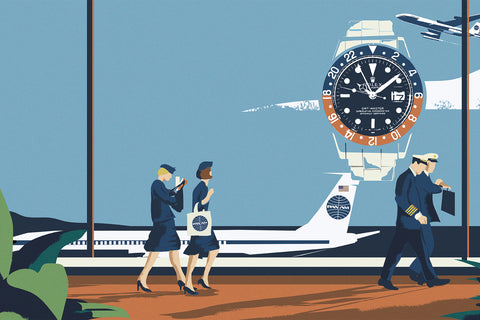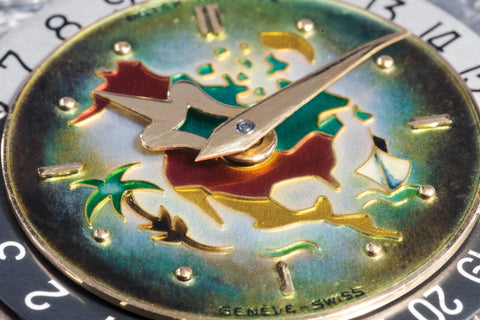It’s an oft touted narrative that the Reverso began its life as a way for British army officers in India to protect the crystals on their watches during games of polo. This is true, but what gets less attention is the three men who led the charge for this watch, none of which were polo-playing members of the British armed forces. César de Trey, René-Alfred Chauvot and Jacques-David LeCoultre were the most heavily involved with its creation.
The first of this trio who should be introduced is César de Trey, a Swiss Businessman who made his fortune in dental equipment, yet whose passion lay in watches. Travelling the globe for both work and pleasure, he traded a few pieces here and there and became known amongst the upper-classes for his horological interest. It was this notoriety that led to him being approached by a player at the British India Polo Club, who was concerned about the fragility of the timepieces worn while competing in the rough-and-tumble sport. This was, after all, the final years of the British Raj, so British officers were particularly present in this part of the world.
Captivated by the idea of protecting a watch in extreme conditions, de Trey went away to find the people who could help him bring the project to life. For the revolutionary case, René-Alfred Chauvot was approached, and a French engineer produced the first prototype of the swivelling case. The patent for it was filed at 1:15 pm on March 4th, 1931, and just a few months later, on August 3rd, it was granted by the Directorate of Industrial Property and Ministry of Trade and Industry of the French Republic.
It wasn’t long after this, in November of the same year, that de Trey registered the name Reverso. The patents for the case were originally filed and owned by Chauvot, but it didn’t take long for de Trey to buy them off him, seeing the value in this unique protective system.
This Grand Reverso Ultra-Thin Duoface “Blue” was released in 2013 as part of Jaeger Le-Coultre’s 180th anniversary celebrations, and was inspired by a now highly sought-after and collectable variation from the 1930s. With a distinctive, stepped rectangular case, the watch is also a pleasingly modern size, at 46.5 x 27.5mm. It also has its original signed crown, and comes equipped with its JLC-stamped tang buckle.
The lacquer dial is a vibrant royal blue and has a fluid, glossy finish. The applied, rhodium-plated, polished struck hour-markers compliment the dial tone, coordinating perfectly with the traditional baton handset. The "Reverso" lettering, printed at 12 o'clock, uses the same font as found on the first 1931 Reverso.
Reversing the watch reveals an entirely different face that allows the wearer to include another timezone – an opaline white dial finished with Clous de Paris guilloché, accompanied by sword-shaped, luminous-filled hands. Below the main dial, at 6 o’clock, a 24-hour sub-dial is shown, with “Day” and “Night” indicators on either side.
This Jaeger-LeCoultre Reverso is powered by the 21-jewel Cal. 854/1 manual-winding movement (tracking both timezones), beating at a rate of 21,600 A/h, boasting a power reserve of up to 45 hours. The button on the right case-side (above the winding-crown) adjusts the second timezone.



























































































































































































































